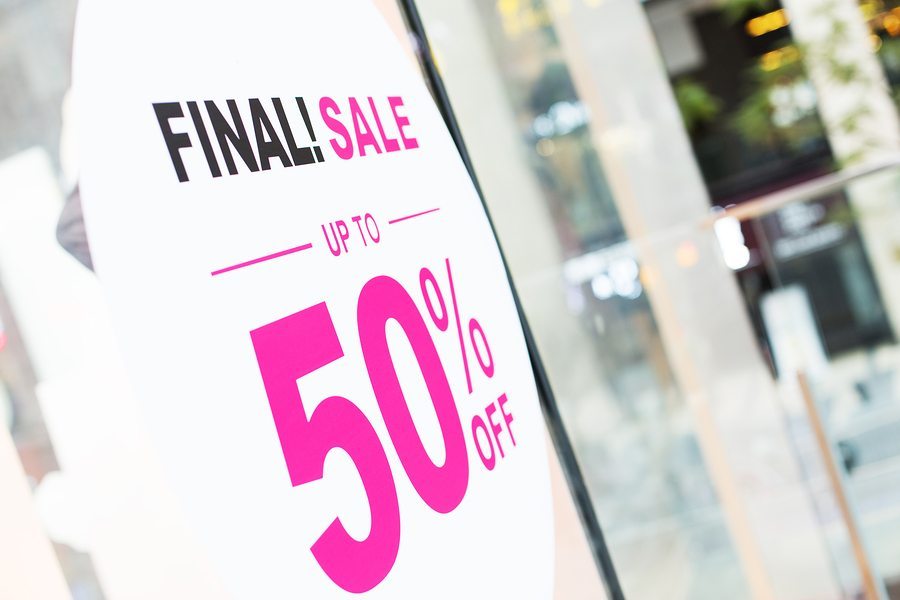Retail industry insiders are aware they have only three seconds to draw the customer’s attention. That is a little too soon to figure out that Jurassic World was made only for children but not by much! This is why brands have begun to rely on quality signage to communicate with customers easily.
Signage helps customers decrease their reliance on sales staff for answering basic questions, improves brand equity and retail sales and raises the perceived value of products (probably not those hoverboards though, they catch on fire!). So, it’s clear that any business wishing for a positive and rewarding customer experience will flip the switch for an effective signage strategy that increases sales via clear product information.
However, you’re mistaken if you think simply focusing on signage would help you achieve your business goals; there are other factors you need to consider, especially if you wish to enhance the effectiveness of your retail signage strategy. These are listed below:
Make the Customers Your Priority
If you think about it, retail signage has one true purpose: to communicate information to the customer. With that said, businesses must focus more on this goal than anything else while devising retail signage. After all, your signs won’t be of much use if your consumers are unable to grasp the message. Kind of like watching Matrix 3, what were they even talking about?! Thankfully, there are a few ways to ensure a better customer experience.
Start by analyzing the available space from a fresh perspective. Leave your store and walk-in once more. But this time, adopt the mindset of a customer. Be critical about what works in your store and what requires improvement. Check whether customers are able to find the items they want easily. Pay attention whether the signs placed around the store relay information clearly or confuse customers even more.
Take Your Location into Consideration
How hard can it be to place signs around your store? Well, quite a bit, if you wish to do it correctly. Even though sign placement appears deceptively simple, you need to take different elements into account. Signs should be placed in a suitable location, where they can be easily spotted and interpreted, prompting consumers to take action.
Interior signage should guide buyers towards different services and products in your store, including checkout areas and restrooms. Encourage sales by placing product information signs next to the products. Watch out for viewing obstructions, glare from overhead lights, and sunlight streaming in through the windows and doors.
Be careful when positioning external signage – it must be noticed by as many passersby as possible. However, think of factors like visibility and glare. Effective placement will guarantee a presence that is worth far more than what you paid for installing the sign. That’s the beauty of signage – in exchange for a one-time investment, you get 24×7 productivity (well, not if your establishment is in a mall and it is closing hours but you get the point!).
Keep Tabs on the Competition
It’s salient to keep a watchful eye on your competitors, and take note of what these business are up to. Think of this as a smart business practice. You can even adopt some of their strategies if you think that’ll help your business. Studying the difference between the signage strategies of your businesses and others may even help you understand what’s lacking in your own store.
Remain Consistent
When you were developing your signage strategy, you obviously had a particular look and feel in mind. Once it has been implemented, you need to stick with it. All your signs throughout the store, in advertising and media, and online should have a unique look and feel. This is why you must use consistent font choices, logos, and colors. You may change these seasonally for a fresh look, but ensure all signs are altered at the same time. A consistent visual story will not only create the impression of stability for your business, but also reinforce your brand.
Pay Attention to Quality
Business should strive to inspire trust in buyers, and for that, they require well-designed signage without any errors. This is quite a simple and inexpensive method for building up trust. Signs also help customers understand that you pay attention to detail and exercise your authority. But for that, your signs need to be accurate and clear every time. If your signs are printed incorrectly and words are misspelled, the credibility of your business takes a blow.
Always be Sincere
To elevate your signage from good to great, you require clear, compelling messages. You should use specific signs for specific purposes, and when a retailer manages to convey distinct messages this way, and still further the brand’s goals, that business automatically becomes more competitive. Focus on devising signs that are concise and capable of relaying information to customers with just a split-second glance. Signs which convey a story, when readable, allow for greater flexibility in terms of design.
These are some tips and tricks that a business must follow when it comes to creating an effective signage strategy. Once implemented, these points will allow a business to maximize the benefits of signs.








